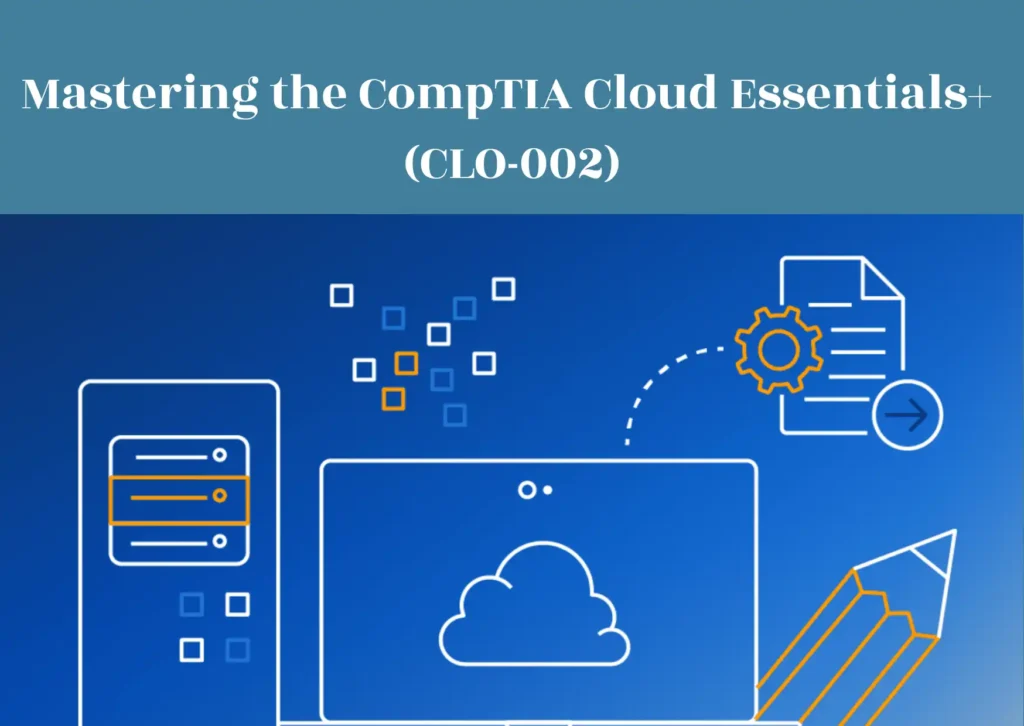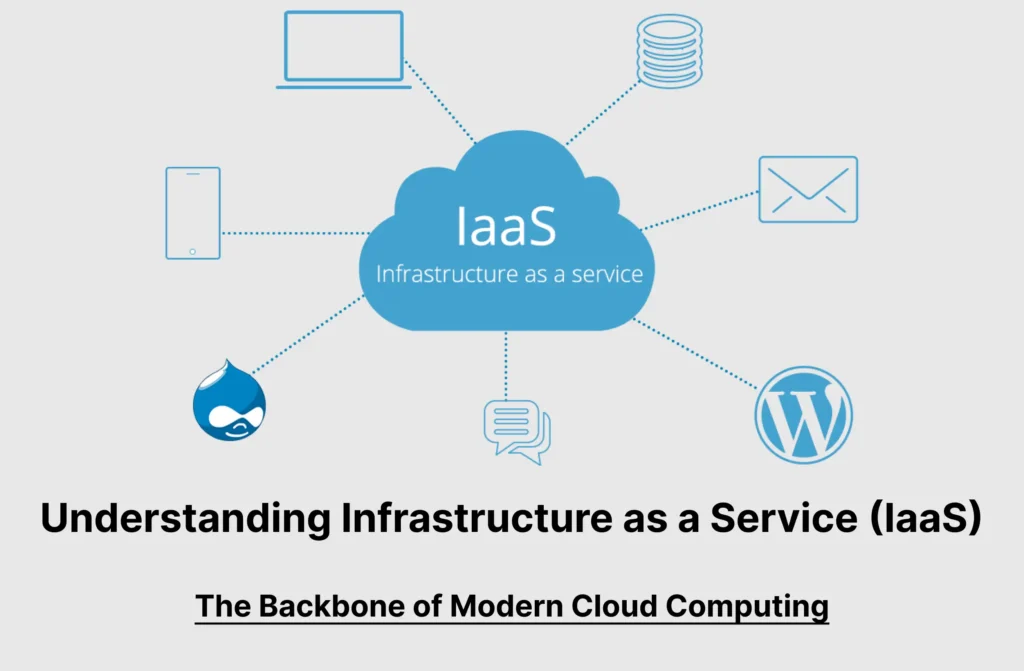Cloud computing has become the backbone of modern business operations. As more companies move their workloads to the cloud, professionals who understand both the technology and the business implications of cloud adoption are in high demand. The CompTIA Cloud Essentials+ (CLO-002) certification is designed to bridge that gap, equipping IT and business professionals with core skills in cloud concepts, migration strategies, governance, and security.
In this guide, we’ll break down the typical chapters covered in the Cloud Essentials+ course, explain how they align with real-world needs, and show you why this is one of the best starting points for a career in cloud computing.
Must go through the FAQ Section in the post.
Table of Contents

1. Cloud Principles and Design – Foundation of Cloud Computing Certification
This chapter lays the groundwork for understanding cloud computing certification concepts. You’ll learn:
- The differences between IaaS, PaaS, and SaaS
- Public, private, and hybrid deployment models (Microsoft Azure)
- Virtualization, redundancy, high availability, and disaster recovery
- The shared responsibility model for cloud security
These YouTube Videos on IaaS, PaaS and Saas will help you gather complete understanding.
Short Summary Table
| Topic | Description |
|---|---|
| IaaS | Virtualized infrastructure resources; user manages OS and apps |
| PaaS | Cloud platform for app development; provider manages infra and OS |
| SaaS | Cloud software applications accessed by end users |
| Public Cloud | Provider-owned shared resources accessible over internet |
| Private Cloud | Dedicated infrastructure for single organization |
| Hybrid Cloud | Combination of public and private clouds |
| Virtualization | Abstracting hardware to run multiple virtual machines |
| Redundancy | Duplicate systems/components for failure tolerance |
| High Availability (HA) | Minimizing downtime via failover and load balancing |
| Disaster Recovery (DR) | Recovery plans and backups after catastrophic failures |
| Shared Responsibility Model | Defines CSP and customer security roles based on service |
Why it matters: A solid grasp of these fundamentals prepares you for both technical roles and strategic cloud decision-making.
2. Cloud Networking and Storage – The Backbone of CompTIA Cloud Essentials+
Networking and storage form the infrastructure layer of any cloud service. This chapter covers:
- Cloud networking and connectivity methods
- Virtual networks and cloud-specific networking services
- Storage technologies such as object, block, and file storage
- Content Delivery Networks (CDNs) for performance optimization
Key takeaway: Understanding these core services is vital for anyone pursuing CompTIA Cloud Essentials+ and aspiring to work in either technical implementation or vendor management.
3. Assessing Cloud Needs – A Deep Dive into Cloud Migration Strategies
Before moving to the cloud, organizations must assess readiness and develop a migration roadmap. This section focuses on:
- Cloud assessments, feasibility studies, and gap analysis
- Identity and Access Management (IAM) considerations
- Evaluating cloud-native applications, IoT, and blockchain opportunities
- Choosing the right cloud migration strategies: lift-and-shift, hybrid, phased, or rip-and-replace
Why it’s important: A clear assessment phase saves costs, reduces security risks, and ensures a smooth transition to the cloud.
4. Engaging Cloud Vendors – Building Strong Partnerships
Selecting the right vendor is critical to long-term cloud success. This module teaches:
- How to evaluate cloud service providers
- Licensing models and cost structures
- Contract negotiation best practices
- Aligning vendor capabilities with company goals
Benefit: You’ll gain practical business skills to handle vendor relationships and ensure cloud services meet performance and compliance needs.
5. Management and Technical Operations – Supporting Cloud Governance
A well-implemented cloud solution still requires ongoing operations. Here, you’ll learn:
- Monitoring, optimization, and availability management
- DevOps workflows like provisioning, CI/CD, and configuration management
- API integration for automation
- Cost control, billing, and performance tuning
Relevance: Proficient cloud governance ensures that technical operations remain compliant and cost-effective.
6. Governance, Risk, Compliance, and Cloud Security
No cloud architecture is complete without strong governance and cloud security. This critical chapter covers:
- Risk assessment, risk management, and vendor lock-in prevention
- Change management processes
- Data protection and privacy regulations (GDPR, HIPAA, etc.)
- Building security policies and implementing compliance frameworks
Impact: These skills are essential for protecting sensitive information and avoiding costly breaches.
Conclusion
The CompTIA Cloud Essentials+ (CLO-002) certification is more than just an entry-level credential — it’s a comprehensive foundation that blends business understanding with technical knowledge. By mastering chapters in cloud computing certification, networking and storage, cloud migration strategies, cloud governance, and cloud security, you’ll position yourself as a valuable asset to any organization’s cloud journey.
If your goal is to break into the cloud industry or strengthen your current IT profile, this certification offers the clarity, credibility, and competitive edge you need.
Prepare for the CompTIA Cloud Essentials+ (CLO-002) certification with our comprehensive guide covering cloud computing fundamentals, migration strategies, governance, and security. Perfect for IT and business professionals ready to excel in cloud roles.
CompTIA Cloud Essentials+ FAQ
What is the CompTIA Cloud Essentials+ certification?
It is an entry-level certification aimed at both technical and business professionals to validate foundational cloud knowledge, including cloud concepts, business understanding, migration, operations, governance, and security.
Who should take the CompTIA Cloud Essentials+ course?
IT professionals new to cloud computing, business analysts, managers, and anyone involved in cloud decision-making or operations can benefit from this certification.
What are the main chapters covered in the Cloud Essentials+ training?
The main chapters include Cloud Principles and Design, Cloud Networking and Storage, Assessing Cloud Needs, Engaging Cloud Vendors, Management and Technical Operations, and Governance, Risk, Compliance, and Security.
How does CompTIA Cloud Essentials+ help with cloud migration?
The course teaches assessment of cloud readiness, migration strategies like lift-and-shift and hybrid, and planning approaches that reduce risks and costs during cloud migration.
Can this certification help in cloud security roles?
Yes, the course covers risk management, governance policies, compliance regulations, and security frameworks essential for securing cloud environments and data.
YouTube Channel: https://www.youtube.com/channel/UCRlduOnTzaMojZI3obWlx_g





Pingback: Cloud Principles and Design – Foundation of Cloud Computing Certification and Its Relation to CompTIA Cloud+